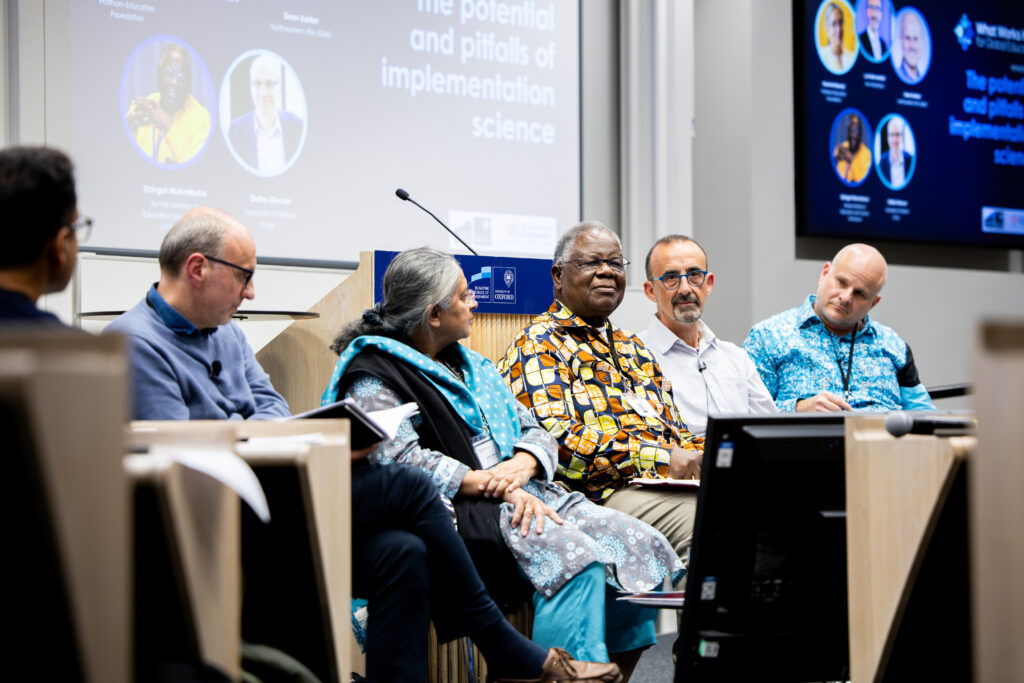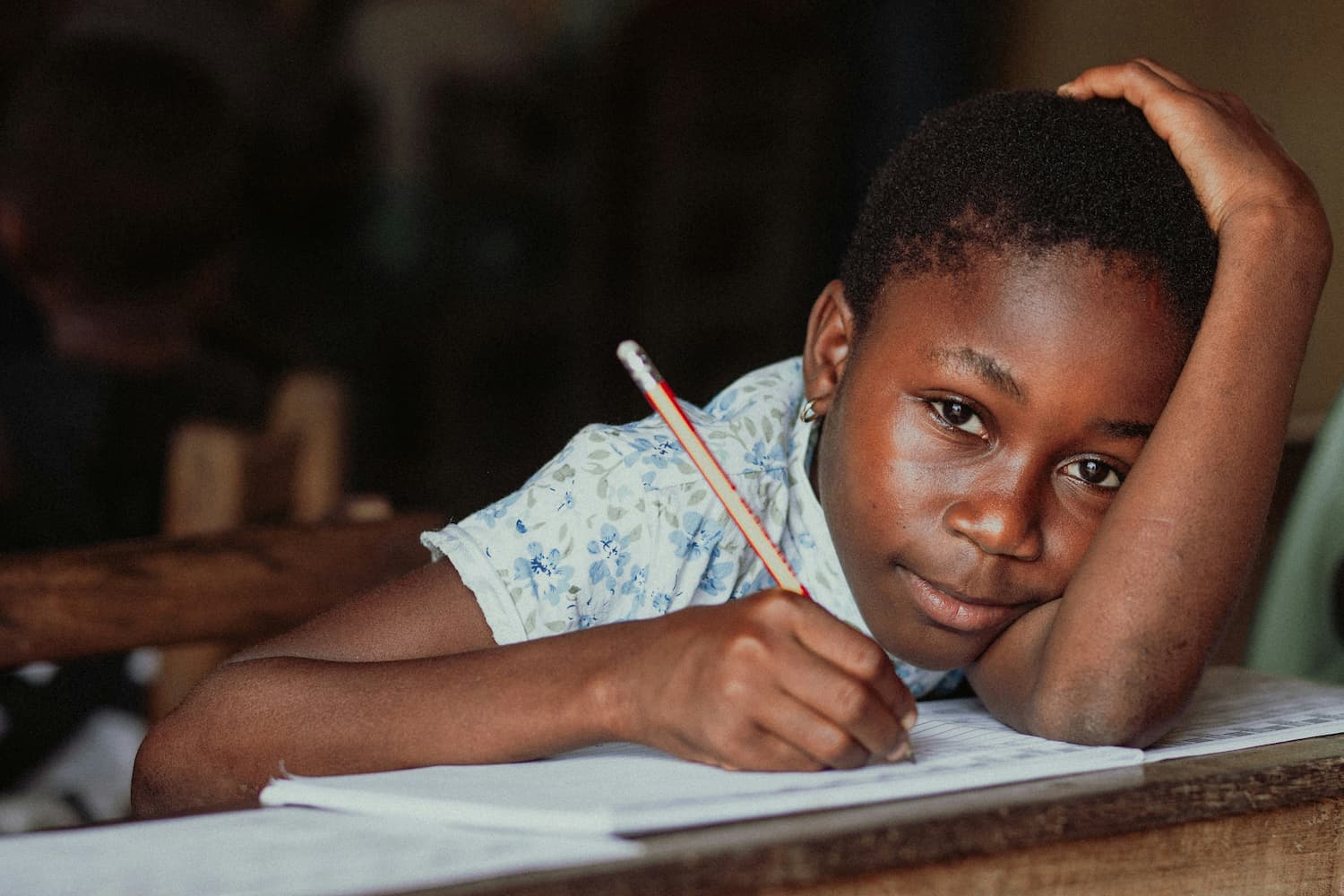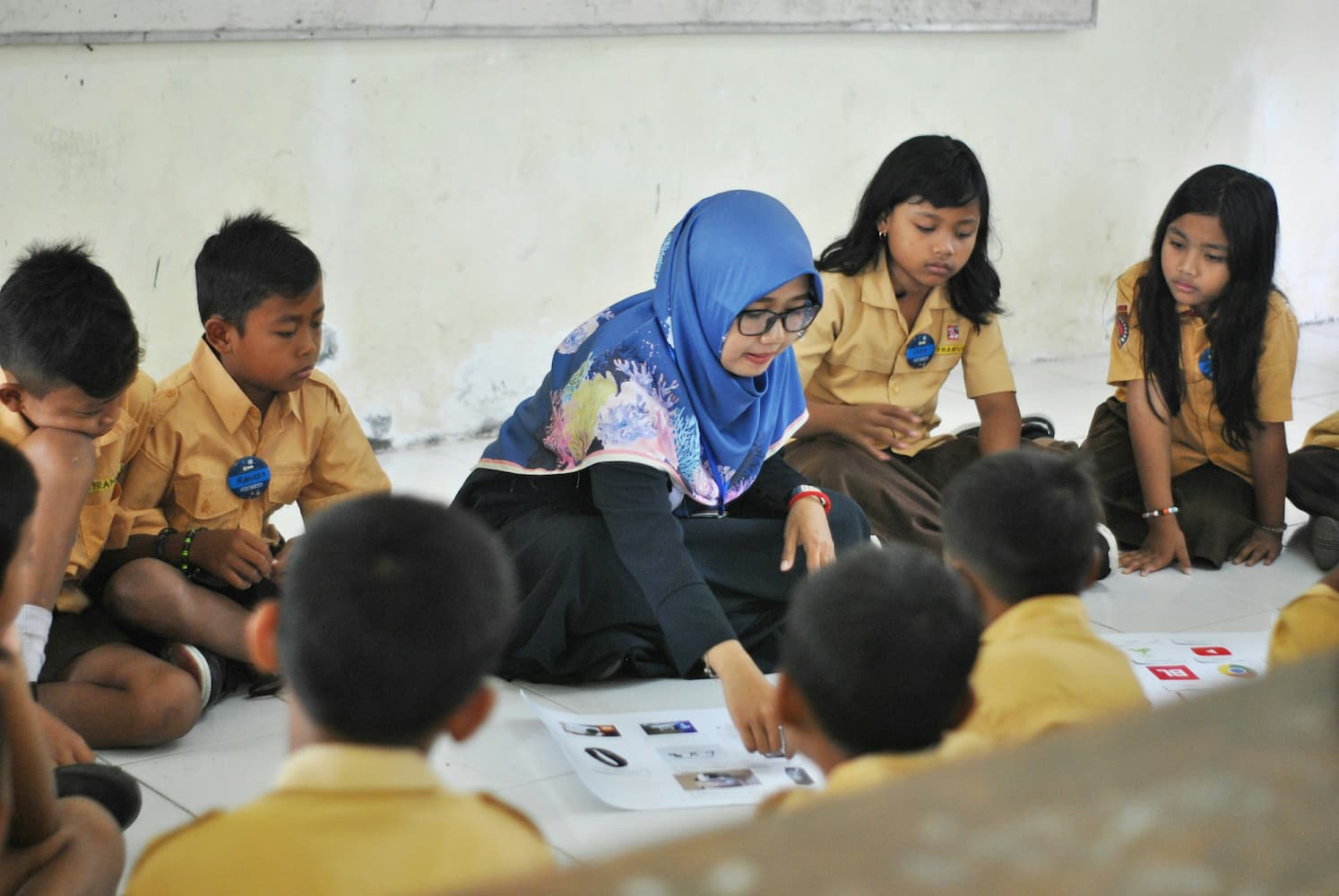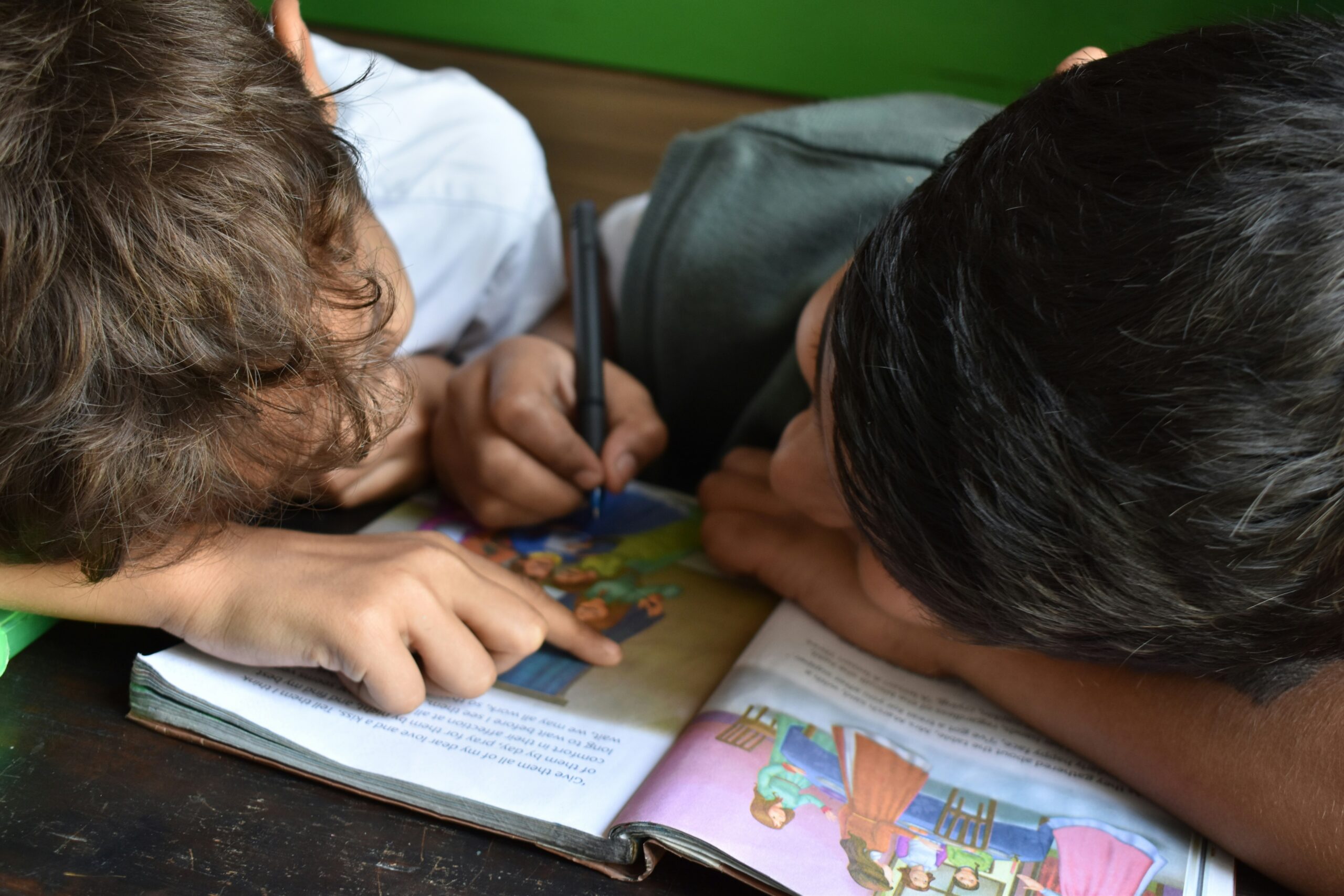Blog
The potential of implementation science in education: Insights from a panel discussion
Madhuri Agarwal
One of the goals of the What Works Hub for Global Education is: to develop and test a new field of implementation science for education. What do we mean by implementation science? Broadly it involves two key aspects: advancing the implementation of science and the science of implementation. The implementation of science focuses on how policymakers and practitioners use research evidence to improve practices. The science of implementation seeks to promote and develop standardised tools and methods for measuring and understanding the complexities of implementing new programmes and initiatives.
The Hub’s aim is to support governments to implement effective educational reforms and improve learning outcomes at scale. A key challenge is bridging the gap between research and practice. While there is growing evidence on how to improve foundational learning, scaling such programmes effectively remains less understood. In this blog, we highlight main takeaways from the keynote panel on the first day of the What Works Hub for Global Education’s annual conference, on ‘The potential and pitfalls of implementation science’, which explored how to bridge this gap and scale successful education programmes.
Our four panellists bring a wealth of knowledge from being on the frontline of research and implementation for years.
- Rukmini Banerji, CEO of Pratham Education Foundation, has led many of Pratham’s partnerships with state-level governments and research activities.
- Luis Benveniste, Global Director of Education at The World Bank, has led major education programmes across multiple regions.
- Dean Karlan, Professor of Economics and Finance at Northwestern University and President of Innovations for Poverty Action, is a leading researcher focused on global poverty solutions.
- Dzingai Mutumbuka, former Minister of Education and Culture in Zimbabwe, has also held leadership roles at the World Bank, specialising in human development.
Here are some insights from the session, which was chaired by Stefan Dercon, Professor of Economic Policy at the Blavatnik School of Government.
 Day 1: Keynote panel – The potential and pitfalls of implementation science (© What Works Hub for Global Education 2024)
Day 1: Keynote panel – The potential and pitfalls of implementation science (© What Works Hub for Global Education 2024)
Generate real-time evidence that is actionable and accessible
To put research into practice, researchers and policymakers need to work together effectively. While both groups may share a common goal, their differing priorities, timelines, and approaches often create barriers to fruitful collaboration. The panellists explored how to overcome these barriers.
Real-time evidence
The panel discussed that implementation research must provide real-time evidence to support rapid decision-making. It requires addressing questions that may seem ‘uninteresting’ from a traditional academic perspective. However, by aligning research with the needs of decision-makers, one can more effectively demonstrate its value and impact. Luis shared an example of how a rigorous evidence-based approach enabled a government to expand a cash transfer programme to improve school enrolment at a lower cost and in a shorter time frame than previously. As he noted:
“Knowledge can bring real change in real time; we need to help the government to see the power and the value this type of research can bring about.”
Action oriented, easy and contextualised
Implementation science must generate evidence that is actionable and accessible, addressing the practical challenges that policymakers face. At present, many studies fail to offer insights on how to adapt and contextualise policy for different systems. As Dean explained:
“…implementation science questions you need to ask are to figure out what to do and how to optimise it in other contexts. And how to make it easy is something that that we need to do better.”
Dzingai emphasised the importance of translating complex research into simple, practical insights that policymakers can implement:
“It is very important to make it translatable into something that can be implemented otherwise the minister is not interested.”
Commitment to continuous learning and adaptation
Improving delivery at scale is not a one-time solution but a continuous cycle, where research and practice inform and refine each other. This requires an open mindset and a culture that encourages dialogue, collaboration, and long-term partnerships.
Test, learn, adapt
A ‘test, learn, adapt’ approach is essential for systematically learning from implementation. This requires organisations to embrace a mindset of continuous learning, where curiosity and constructive debate are key to understanding what works best. As Rukmini explained:
“If you have a lot of ambition and very limited resources and capabilities, the only way to balance is to figure out what actually works and what is it that you can make happen. While resources and needs are often considered, we’ve thought quite a bit from the beginning about what are we capable of doing.”
And, as Dean pointed out, maintaining an open mindset is crucial:
“A big message that I think is important for everybody, not just bilaterals, is that the work of measuring impact is not for accountability but to help guide future allocations. Once you have that mindset, you’re not worried about failure—you’re worried about not learning and not optimising in the future.”
Luis reinforced the importance of learning from failures:
“We need to embrace failures and come clean when (we) run into roadblocks and draw lessons from it.”
Finally, Dzingai offered a crucial message for policymakers: just do it. Inaction, or inertia, can be more damaging than making a wrong decision. Even if a decision turns out to be wrong, it presents a chance to reflect, adjust, and improve.
Encourage dialogue and long-term partnerships
A culture of continuous learning can nourish long-term relationships. Engaging stakeholders at all levels creates opportunities for open dialogue, shared learning, and problem-solving. Rukmini shared how direct work laboratories enabled ongoing collaboration with the government and rigorous research. This collaborative process, which combined rigorous research and on-the-ground insights, led to a programme design that was better suited for large-scale delivery. As Rukmini explained:
“…when implementers, researchers, and government work closely together, we can achieve significant progress. By engaging in joint discussions, you can advance the collective understanding of what works, which in turn helps guide future recommendations and actions.”
Looking ahead: priorities for implementation science research
Towards the end of the session, the panellists were asked to envision the future of implementation science research over the next six years. What should be the research priorities to have the greatest impact on improving education at scale?
Go wide and go deep
To frame the research questions that implementation science can address, Dean proposed a two-pronged approach: ’Go wide’ and ‘Go deep. ‘Go wide’ involves gathering evidence from similar programmes across various settings to understand their effectiveness in different contexts. ‘Go deep’, on the other hand, focuses on conducting in-depth analysis and experimentation within specific contexts to identify areas for improvement. By combining these approaches, we can gain a comprehensive understanding of what works and how to adapt programs to meet specific needs depending on the context.
Agents of change: teachers and the middle tier of bureaucracy
Dzingai underscored the critical role of teachers as ‘agents of change’ in any education reform. Luis highlighted a gap in research, noting, ‘Research on initial teacher training programs often lacks depth and could be significantly enhanced.’ The ultimate goal is to ensure that teachers are well-prepared to meet the challenges of the classroom upon graduation.
Rukmini shared an example from her work with the government of Karnataka, where the middle tier of bureaucracy played a crucial role in supporting teachers to implement programs effectively. Luis further added, ‘We have limited understanding of how district, municipal, and provincial systems influence classroom practices.’ These systems often operate as black box, with their impact on teaching and learning difficult to discern.
Think big think government
To address the learning crisis at scale, we must take a bold approach. As Dzingai stressed, ‘We need to think big and confront the monster.’ Working with governments is key to achieving large-scale impact.
There is an urgent need to engage governments more deeply in discussions about implementation. It’s not enough to work alongside them; we must bring these conversations directly to decision-makers and ensure their active involvement in shaping solutions.
Luis emphasised the importance of this next step:
“The next step is institutionalisation—building the capacity within governments to deliver high-quality education services to all children.”
Watch the full session on Youtube.
Agarwal, M. 2024. The potential of implementation science in education: Insights from a panel discussion. What Works Hub for Global Education. 2024/005. https://doi.org/10.35489/BSG-WhatWorksHubforGlobalEducation-BL_2024/005
Discover more

What we do
Our work will directly affect up to 3 million children, and reach up to 17 million more through its influence.

Who we are
A group of strategic partners, consortium partners, researchers, policymakers, practitioners and professionals working together.

Get involved
Share our goal of literacy, numeracy and other key skills for all children? Follow us, work with us or join us at an event.
